


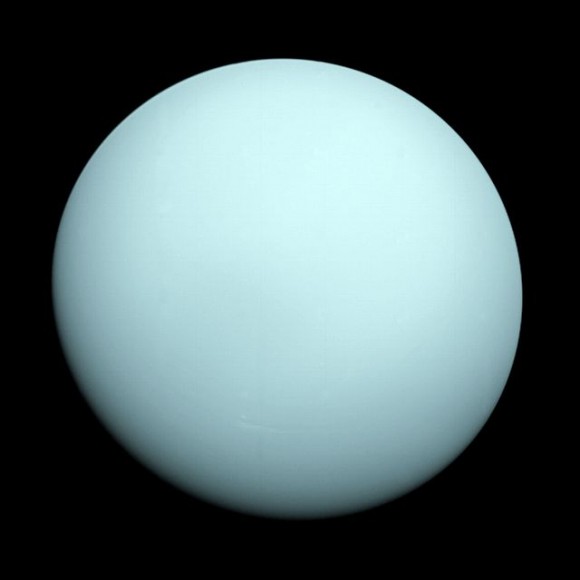
Enigmatic Uranus as seen through the automated eyes of Voyager 2 in 1986. (Credit: NASA/JPL).
by MATT WILLIAMS on JUNE 21, 2015
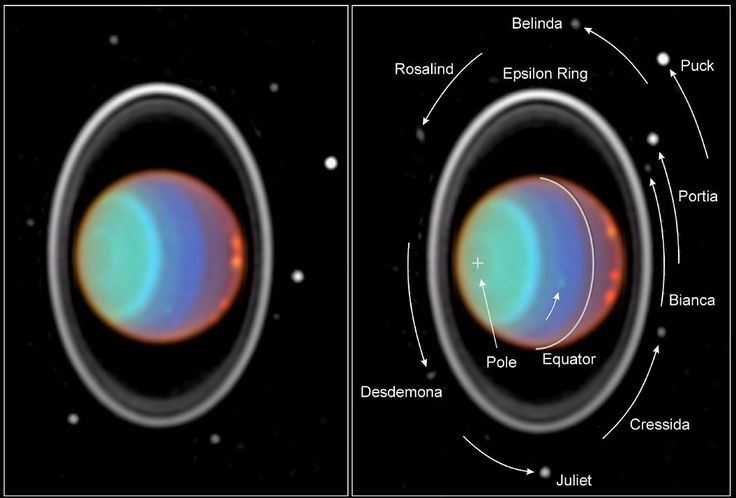
Uranus and its system of Moons. Credit: NASA/Hubble
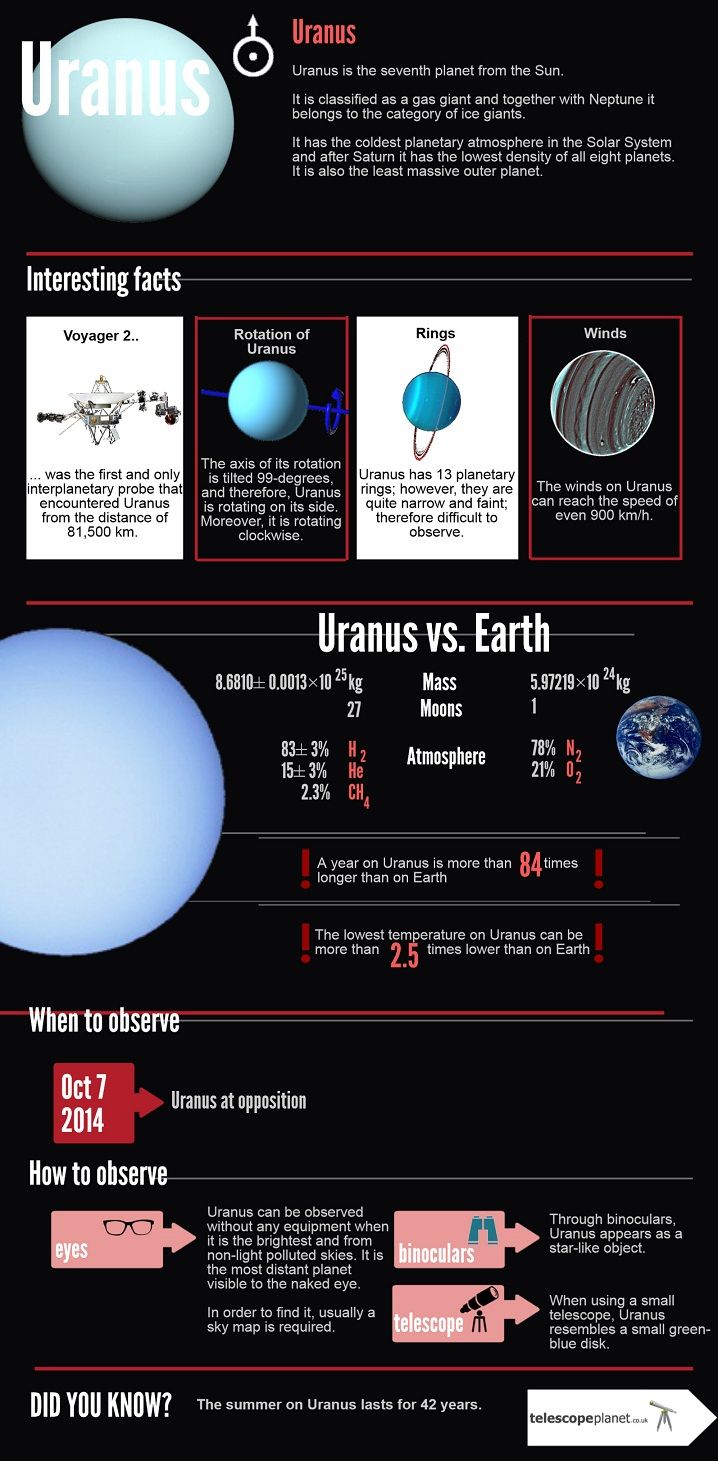
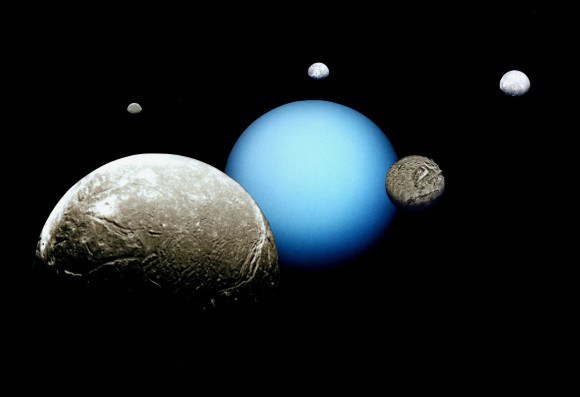
Uranus and its five major moons: (left to right) Miranda, Ariel, Titania and Umbriel and Oberon in the foreground. Credit: space.com
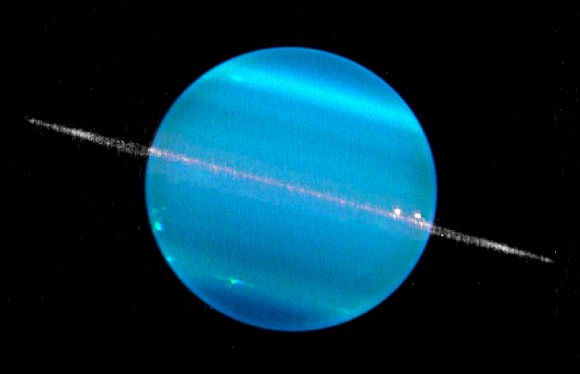
A composite image of Uranus in two infrared bands, showing the planet and its ring system.
Picture taken by the Keck II telescope and released in 2007. Credit: W. M. Keck Observatory (Marcos van Dam)
Sometimes first impressions are poor ones. When the Voyager 2 spacecraft whizzed by Uranus in 1986,
the close-up view of the gas giant revealed what appeared to a be a relatively featureless ball.
By that point, scientists were used to seeing bright colors and bands on Jupiter and Saturn.
Uranus wasn?t quite deemed uninteresting, but the lack of activity was something that was usually remarked upon when describing the planet.
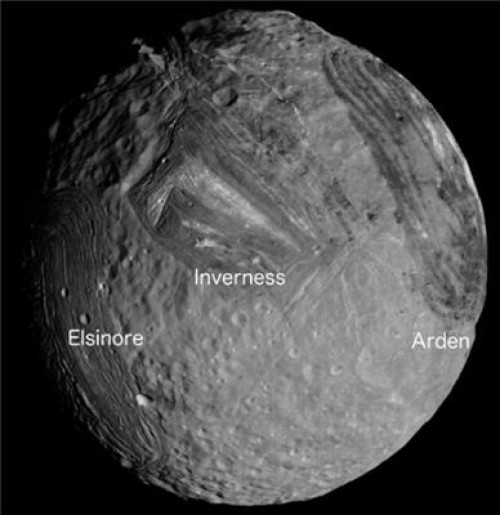
Mosaic of southern hemisphere of Miranda, the innermost regular satellite of Uranus, with radius of 236 km.
Projection is orthographic, centered on the south pole. Visible from left to right are Elsinore, Inverness, and Arden coronae.
Credit: NASA/Jet Propulsion Laboratory/Ted Stryk
Miranda, a small, icy moon of Uranus, is one of the most visually striking and enigmatic bodies in the solar system.
Despite its relatively small size, Miranda appears to have experienced an episode of intense resurfacing that
resulted in the formation of at least three remarkable and unique surface features -- polygonal-shaped regions called coronae.
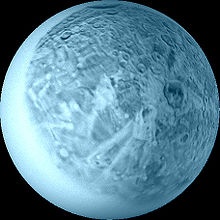
Oberon, a major moon of the planet Uranus. Named after the mythical king of fairies by William Herschel in 1787.
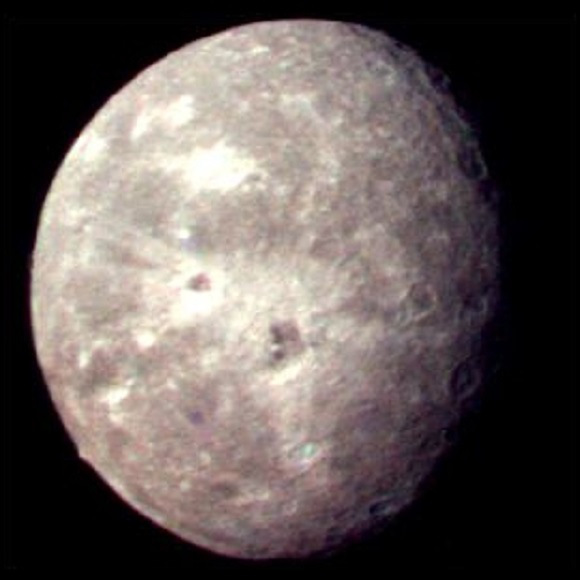
Oberon, as imaged by the Voyager 2 probe during its flyby on Jan. 24, 1986. Credit: NASA
In 1610, Galileo’s observed f0ur satellites orbiting the distant gas giant of Jupiter.
This discovery which would ignite a revolution in astronomy, and encouraged further examinations
of the outer Solar System to see what other mysteries it held. In the centuries that followed,
astronomers not only discovered that other gas giants had similar systems of moons, but that these systems were rather extensive.
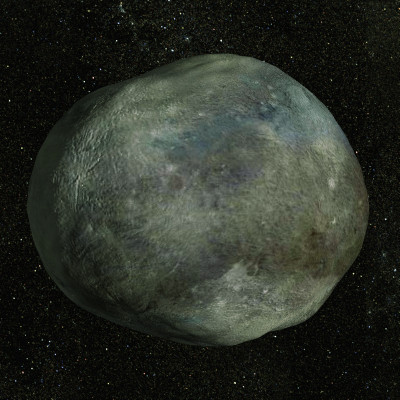
Jonathan Flemister
? Moon of Uranus: Bianca. 51km diameter. Discovered by Voyager 2 in 1986. Named after the sister of Katherine in Shakespeare's play
'The Taming of the Shrew'. Bianca belongs to the Portia Group of satellites, which also includes Cressida, Desdemona, Juliet, Portia,
Rosalind, Cupid, Belinda and Perdita. Its surface is grey in color. Virtually nothing is known about it, and no pictures exist showing
what it actually looks like. Third closest moon to Uranus. CGI render by mr-nerb.
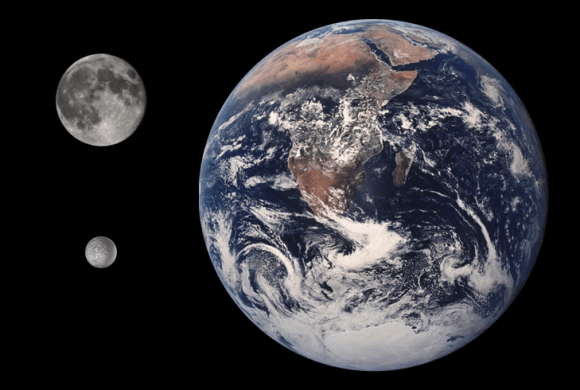
Size comparison of Earth, the Moon, and Umbriel. Credit: Tom Reding/Public Domai
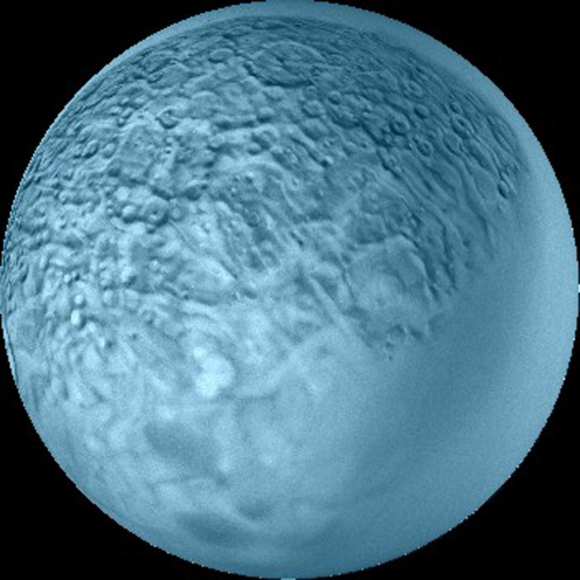
US Geological Survey map of Umbriel, showing its cratered surface and polygons. Credit: ISGS
Interesting Facts:
The surface of Umbriel has far more and larger craters than do Ariel and Titania,
ranging in diameter from a few kilometers to several hundred. The largest known crater on the surface is Wokolo,
which is 210 km in diameter. Wunda, a crater with a diameter of about 131 kilometers,
is the most noticeable surface feature, due to the ring of bright material on its floor (which scientists think are from the impact).
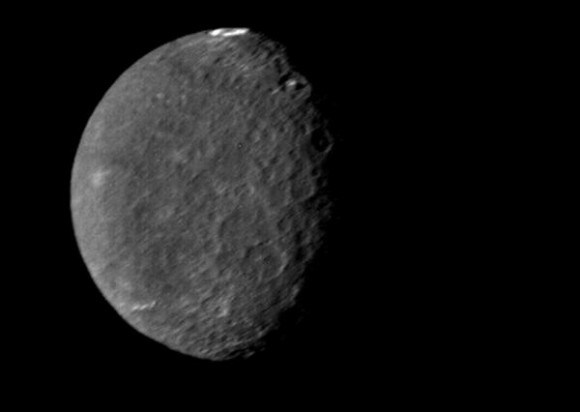
The southern hemisphere of Umbriel displays heavy cratering in this Voyager 2 image, taken Jan. 24, 1986.
The large impact crater of Wunda is visible at the top. Credit: NASA/JPL
Because they are in the planet�s equatorial plane, Uranus� satellites also experience these changes.
This means that Umbriel�s north and south poles spend 42 years in light and then 42 years in darkness before repeating the cycle.
In fact, the Voyager 2 flyby coincided with the southern hemisphere�s 1986 summer solstice, when nearly the entire northern hemisphere was in darkness.
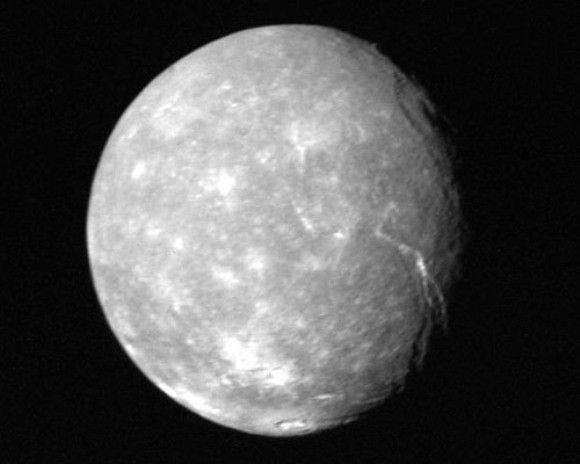
Voyager 2 image of Titania, Uranus’ largest moon. Credit: NASA
Like all of the Solar Systems’ gas giants, Uranus has an extensive system of moons.
In fact, astronomers can now account for 27 moons in orbit around Uranus. Of these,
none are greater in size, mass, or surface area than Titania. One of the first moon’s to be discovered around Uranus,
this heavily cratered and scarred moon was appropriately named after the fictional Queen of the Fairies.